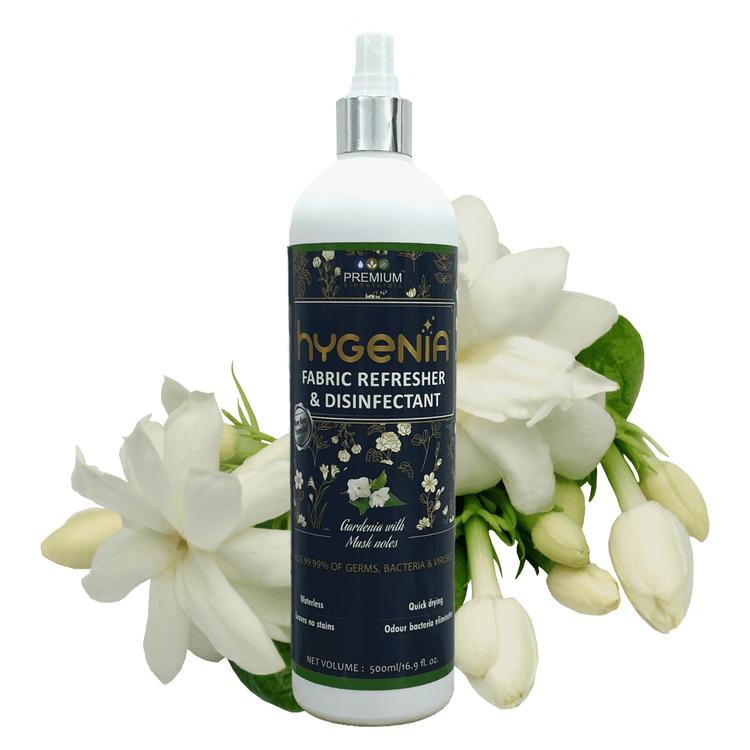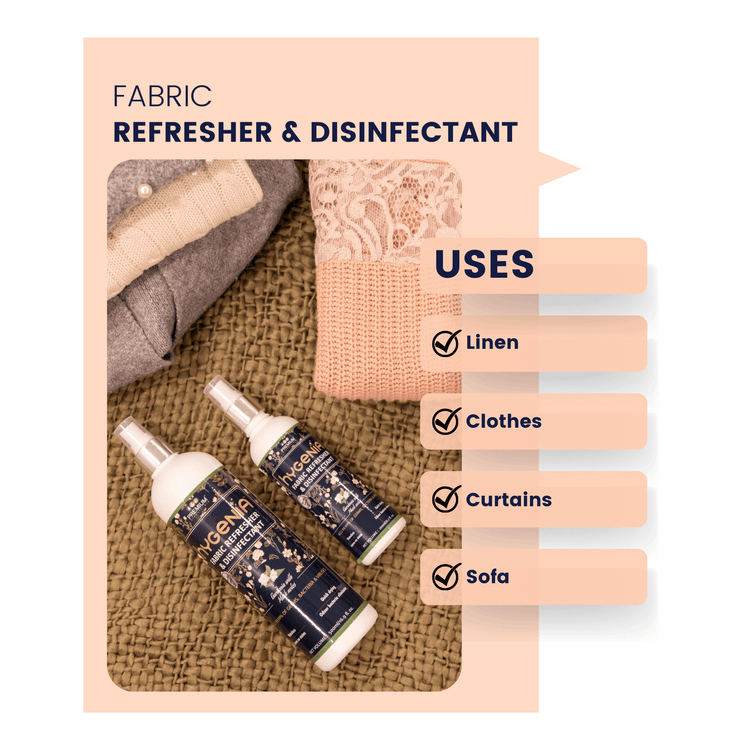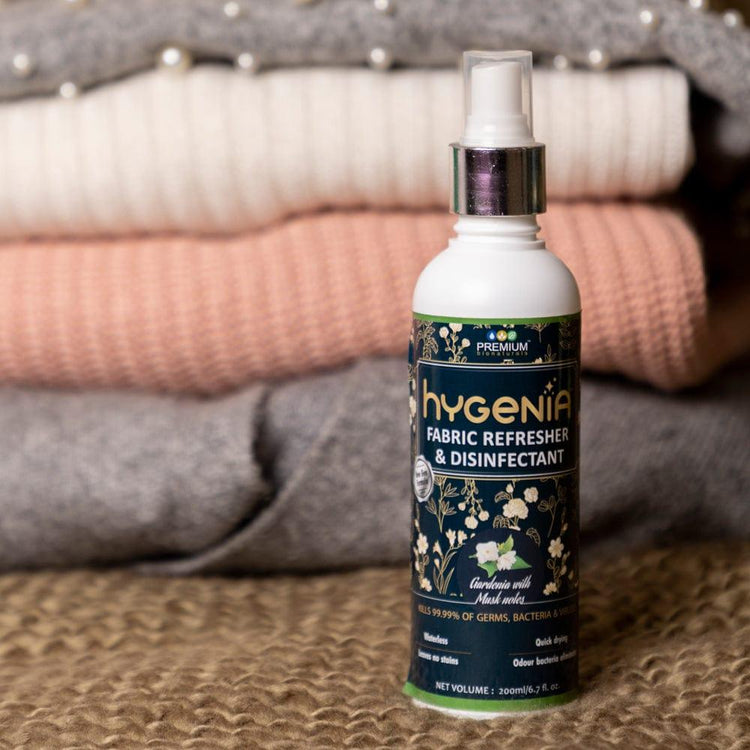We all love our favourite fabrics, but did you know that with just a little extra care, you can keep them looking fabulous for years to come?" Whether it's lace, silk, or your everyday gentle staples, knowing how to care for fabrics, especially delicate ones, can make all the difference in extending their lifespan and keeping them looking good as new.

Taking care of delicate fabrics like intimate wear can be tricky and often intimidating. Whether you're dealing with silk, cashmere, or lace, knowing the proper care techniques is essential to the life of your apparel. If you’ve ever asked, “How do you wash delicates without ruining them?” or wondered if your laundry habits are causing unnecessary damage, this guide is for you. Below are smart, fabric-friendly tips to clean, protect, and preserve the pieces you love most.
What is a Delicate Fabric?
Delicate fabrics refer to textiles that are lightweight, soft, and easily damaged by heat, friction, or harsh chemicals. Common examples include silk, chiffon, lace, satin, organza, and some types of wool or synthetic blends. These fabrics are often used for lingerie, eveningwear, blouses, and speciality pieces that require extra care when laundering.

Delicate garments tend to stretch, snag, or lose their texture if washed roughly or dried at high temperatures. That’s why recognising them and adjusting your care approach is key to preserving their beauty and feel.
How to Wash Delicate Fabrics?
Caring for delicate fabrics requires more than tossing them into a wash cycle. Here’s how to approach it properly:
-
Read the care label: Always check the garment tag for washing instructions.
-
Use cold water: Hot water can break down fibres or cause shrinkage.
-
Choose the right cycle: The delicate or gentle wash cycle is designed to reduce agitation and spin speed.
-
Use a mesh laundry bag: It prevents snagging or stretching during machine washing.
-
Pick the right detergent: A laundry detergent for delicate fabrics that’s non-toxic, enzyme-free, and pH-balanced helps preserve softness and structure.
-
If needed, refresh lightly worn items with a natural fabric spray between washes—like our Fabric Refresher Disinfectant – Gardenia with Musk Notes, a plant-based solution ideal for extending the life of your garments between washes.

Fabric Care 101: Essential Tips to Keep Your Clothes Looking New
When it comes to delicate garments, how you wash and dry them plays a major role in maintaining their quality. The wrong laundry choices—like high heat, strong detergents, or rough cycles—can lead to shrinkage, damage, or premature wear. But with a few simple adjustments, you can keep your favourite fabrics looking and feeling new.
Here are a few key laundry settings and techniques to know:
1. Understand the Tumble Dry Setting: What is a tumble dry setting?
It refers to the intensity and temperature used during machine drying. For delicate garments, always avoid high heat. Understanding “what is tumble dry setting” can help you prevent shrinkage or fabric damage during drying. Choose “low” or “air fluff” (also known as the delicates dryer temp) to ensure safe drying.
2. Use the Delicate Wash Cycle: Delicate fabrics require minimal agitation. What is a delicate wash? It’s a gentle machine cycle with slower spin speeds that reduces friction and wear, perfect for items like silk, lace, chiffon, or lingerie. Not sure what a delicate wash? It’s a low-agitation cycle designed specifically for lightweight and fragile clothing.
3. Always Choose the Right Cycle for the Fabric: Always opt for the delicate wash cycle when laundering items like silk, lace, or chiffon to maintain their integrity. This setting helps preserve shape, texture, and longevity.
By understanding your machine’s settings and how they affect your clothes, you take the first big step in learning how to care for fabrics properly. These small decisions—low heat, gentle cycles, and fabric-specific choices—can protect your garments wash after wash.
Choosing the Right Detergent and Wash Method for Delicates
Delicates need gentle care, and that starts with the right detergent.

-
Look for formulas that are plant-based, pH-balanced, enzyme-free, and free from harsh dyes or synthetic fragrances.
-
These options are safer for sensitive fabrics like silk, lace, wool, and chiffon, and help maintain softness and colour over time.
-
Use a gentle, plant-based laundry detergent for delicate fabrics to avoid weakening the fibres.
#Pro Tip: Avoid fabric softeners. Although they might make clothes feel softer initially, they can coat natural fibres over time and affect breathability, particularly in fabrics like silk and lace.
If your clothes still hold onto odours—especially after being left damp for too long—check out our guide on how to get smell out of clothes left in the washer. It’s packed with natural, fabric-safe solutions that pair perfectly with your delicate care routine.
Frequently Asked Questions:
Q1) What is the delicate wash cycle, and when should I use it?
A) The delicate cycle uses gentle agitation and slower spin speeds, making it perfect for silk, lace, or any lightweight, fragile fabrics. Use it whenever a care label mentions "gentle wash" or "hand wash."
Q2) Which type of laundry detergent is best for delicate fabric?
A) Choose a detergent that’s free of enzymes, brighteners, and synthetic fragrances. A plant-based formula with a neutral pH is best for sensitive materials.
Q3) How do I wash delicates without damaging them?
A) Hand washing in cool water is ideal. If using a machine, place items in a mesh bag and choose a delicate cycle with cold water.
Q4) What is the safest tumble dry setting for delicate garments?
A) Always use the tumble dry low or air dry setting. High heat can shrink or damage fragile fibres.
Q5) Should I use fabric softener on delicate fabrics?
A) It’s best to skip fabric softener. These products can build up on delicate materials, making them stiff or discoloured over time.
Taking care of delicate garments doesn’t have to be overwhelming. With a little knowledge and the right habits—like using gentle detergents, understanding your machine’s settings, and avoiding harsh heat—you can keep your favourite fabrics looking and feeling their best.
With just a little extra care and the right techniques, your favourite delicate pieces can stay beautiful, soft, and ready to wear for years to come, because your wardrobe deserves to last.














